Kawafuku Restaurant, Los Angeles, CA
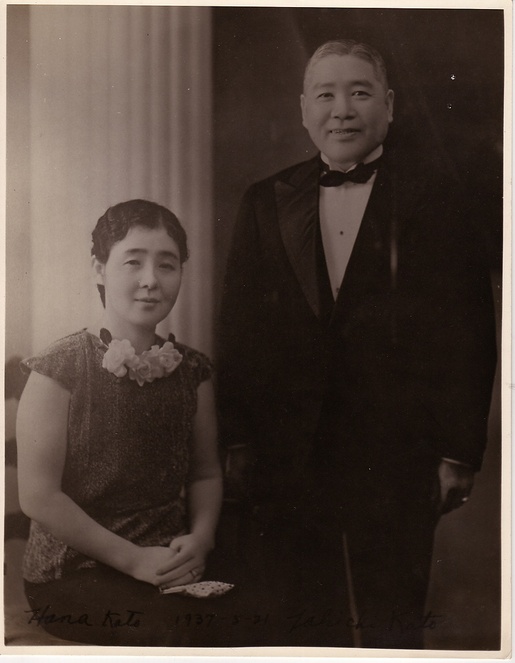
|
||
| Licensing | ||
This is a collection of images related to the Kawafuku Restaurant in L.A.'s Little Tokyo. The restaurant was opened on Weller Street in 1923 by Takichi and Hana Kato. It later moved to 204 East First Street. Following World War II, Tokijiro Nakajima took over the restaurant. However, the Kato's son Mitsuo, known as Jack, opened another restaurant in Little Tokyo with his wife Masako. This was the Daruma Cafe at 123 S. San Pedro Street, a popular Little Tokyo spot during the 1950s and 1960s. The Little Tokyo Historical Society has posted these photographs on behalf of Masako Kato.
Slides in this album |
|
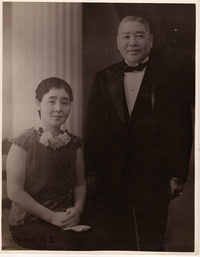
|
Takichi and Hana Kato, 1937The Katos founded Kawafuku in 1923. According to their daughter-in-law Masako, Hana had previously been a chef at the Imperial Hotel in Little Tokyo.
Takichi and Hana Kato, 1937 |
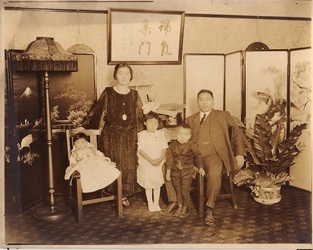
|
The Kato Family, date unknown.The Katos with their three children, date unknown.
The Kato Family |
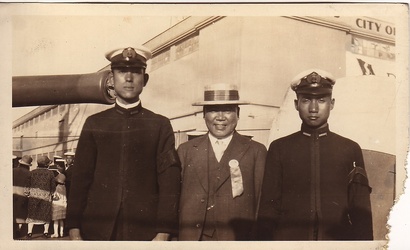
|
Takichi Kato with sailorsTakichi Kato and two members of the Japanese Imperial Navy, during the 1920s or 1930s. This photo was probably taken in the vicinity of the harbor at San Pedro, California.
Takichi Kato with sailors |

|
Mitsuo "Jack" KatoMitsuo, the son of Takichi and Hana Kato. When he was older, Mitsuo went by the name "Jack." He opened his own restaurant in Little Tokyo, the Daruma Cafe.
Mitsuo "Jack" Kato |

|
Takichi and Mitsuo KatoTakichi Kato stands to the left while an unidentified man carries little Mitsuo. This picture appears to have been taken in Little Tokyo, perhaps outside of Kawafuku.
Takichi and Mitsuo Kato |
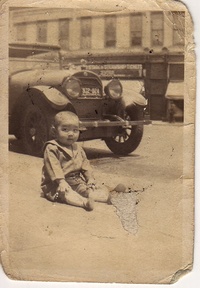
|
Mitsuo Kato on the streetMitsuo checks out the traffic in Little Tokyo in the 1930s.
Mitsuo Kato on the street |
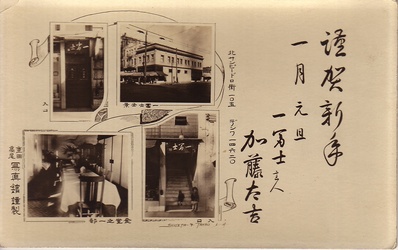
|
Images of Kawafuku in the 1920sImages of Kawafuku on a postcard from the 1920s. Kawafuku was considered an upscale restaurant that specialized in sukiyaki before the war.
Images of Kawafuku in the 1920s |
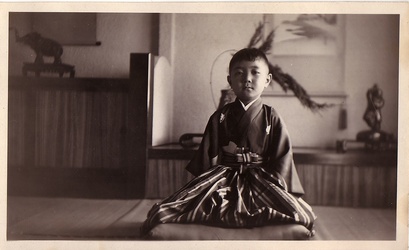
|
Mitsuo Kato in his kimonoA formal portrait of Mitsuo Kato in traditional Japanese clothing.
Mitsuo Kato in his kimono |
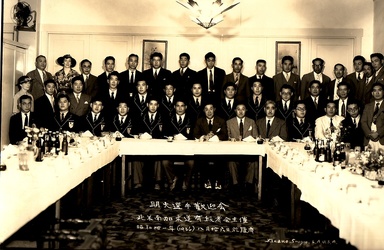
|
Meiji University Athletes' Reception, 1936A welcome reception for visiting Meiji University athletes at Kawafuku on August 16, 1936. The reception was hosted by the Southern California Judo Yudanshakai.
Meiji University Athletes' Reception, 1936 |
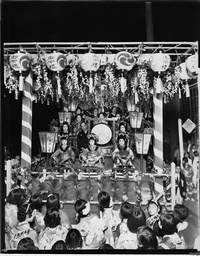
|
Nisei Week in the 1930s, Little TokyoA float during a Nisei Week parade in the mid-1930s. One or more members of the Kato family might be riding on the float.
1930s Nisei Week, Little Tokyo |
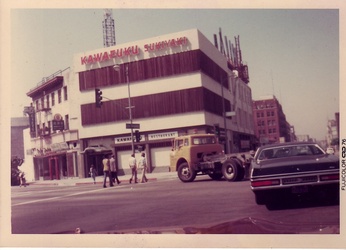
|
Kawafuku in the Postwar DecadesKawafuku in its post-WWII incarnation, probably in the early 1970s. As the sign said, Kawafuku continued to specialize in sukiyaki, although it had also expanded its menu to many sushi options after Tokijiro Nakajima took over in 1946.
Kawafuku in the Postwar Decades |

|
Mitsuo "Jack" and Masako Kato, 1960sMitsuo "Jack" Kato and his wife Masako in front of their Little Tokyo restaurant, the Daruma Cafe, in the 1960s.
Mitsuo "Jack" and Masako Kato, 1960s |

|
Sign for Daruma CafeSign for the Daruma Cafe, at 123 S. San Pedro Street in L.A.'s Little Tokyo. Mitsuo and Masako Kato ran this restaurant for several decades following World War II.
Sign for the Daruma Cafe |

|
Menu from Daruma CafeFirst page of the menu from the Daruma Cafe in its Montebello incarnation. This menu dates from sometime in the 1960s.
Menu from Daruma Cafe |

|
Inside Daruma Cafe menuInside page of menu from Daruma Cafe in the 1960s. Gohan (rice) for 20 cents - those were the days!
Inside of Daruma Cafe Menu |
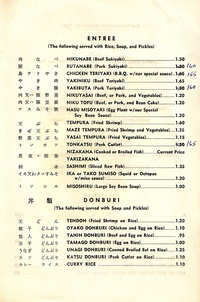
|
Another page from Daruma Cafe menuAnother page from the interior of the Daruma Cafe menu in the 1960s.
Another page from Daruma Cafe menu |
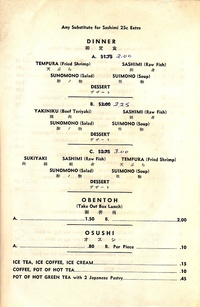
|
Back of Daruma Cafe menuThe back of the menu from the Daruma Cafe in the 1960s.
Back of Daruma Cafe menu |
 lthistory
lthistory
 Kawafuku Restaurant, Los Angeles, CA
Kawafuku Restaurant, Los Angeles, CA The Oliver Clubs: Sports and Community in Japanese American Los Angeles
The Oliver Clubs: Sports and Community in Japanese American Los Angeles Koyasan Buddhist Temple Collection
Koyasan Buddhist Temple Collection Little Tokyo Walking Tours
Little Tokyo Walking Tours
 Journal feed
Journal feed
